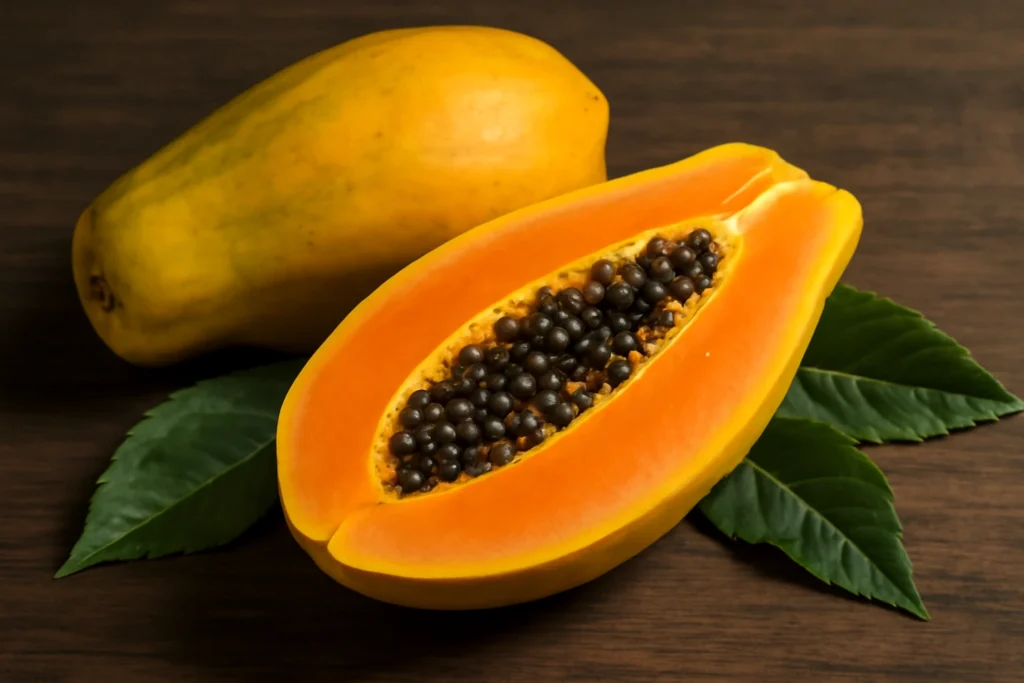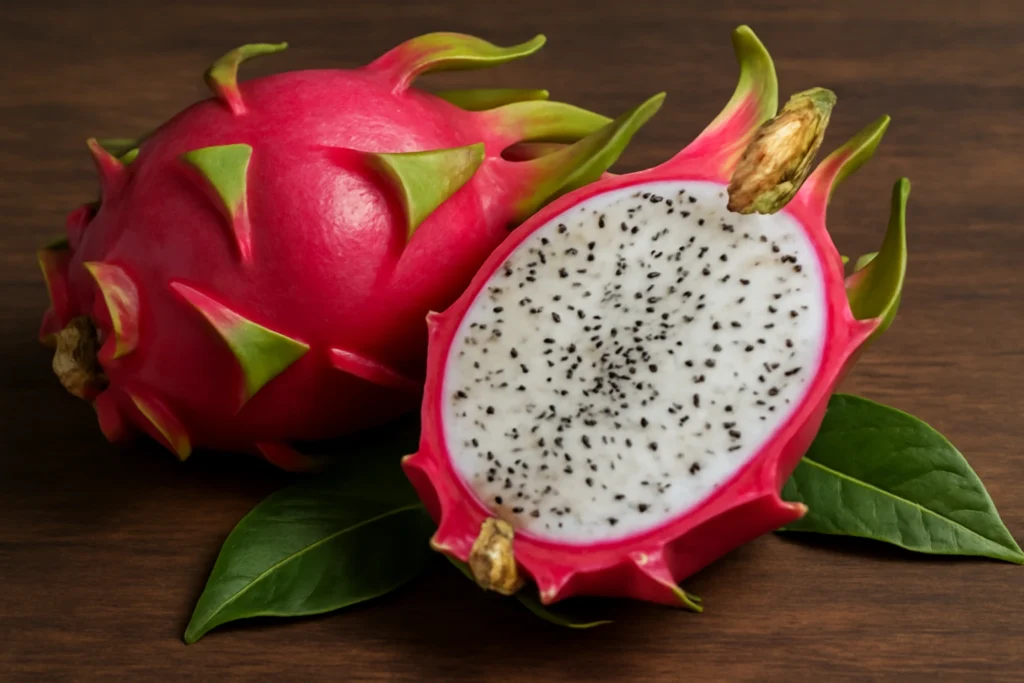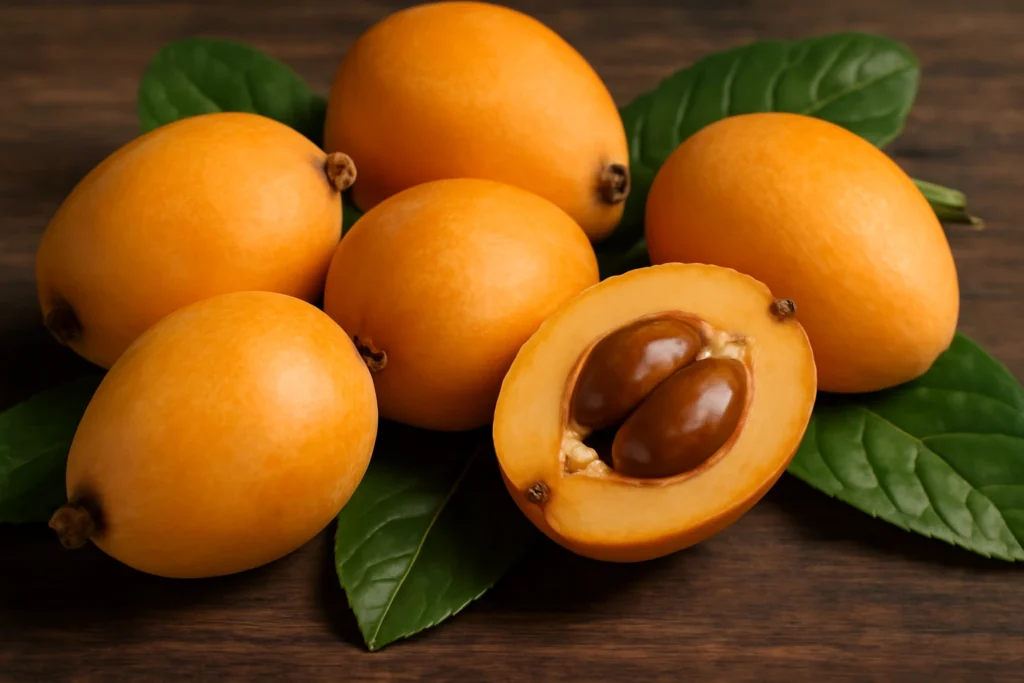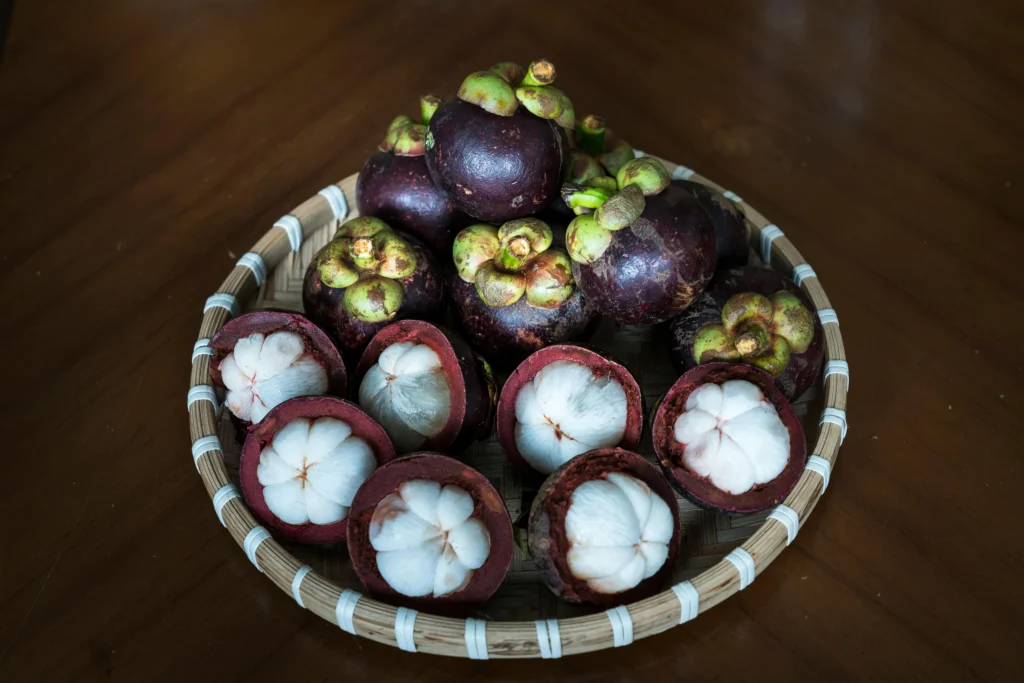In the Dominican Republic, you are on the trip and out of the blue you are asking yourself a question. Is it safe to consume raw Dominican fruits? You are not alone. It is one of the frequent queries of travelers who want to enjoy the local tastes without getting ill.
Well, the majority of the Dominican fruits are not only safe, but also extremely delicious raw form. Punta Cana, with its fine beaches and catamaran tours, is also a paradise of the world of tropical fruit. These fruits are generally fresh and will be found as juicy mangoes, crispy coconuts, etc. All you need to do is practice basic tips on hygiene such as rinsing or peeling before eating. As well as drink ripe fruits only through reliable sources.
This guide will identify which of the fruits are best-taken raw and the way to take them safely. You can even taste some on a catamaran cruise.
Why Dominican Fruits Are So Famous
The Dominican Republic is an undisputed producer of the freshest and tastiest fruits in the Caribbean. The reason is all due to year round sunshine, fertile soils and tropical climatic conditions. It does not matter whether you are walking around a local market, lying on a beach or on a catamaran tour. You will come across fruit stands that are colourful and tasty.
Fruits found in Dominica do not only treat your tastebuds; they also form a huge part of the local culture. Most of them find use in conventional drinks, desserts and snacks that will make your dining experience in Punta Cana flawless.
Popular Dominican Fruits You Should Try
With over 40 tropical varieties grown locally, you’re sure to enjoy a new favorite with every bite. Here are some of the best Dominican fruits you’ll find during your trip, each offering a unique taste of the island.
Mango
The Dominican Republic is a major producer of mango and it is one of the most popular fruits there, particularly in the warm months. Locals will eat them fresh sometimes with a dash of salt or chili. It has a golden-colored, juicy and very sweet flesh when ripe.
Dominican Name: Mango
Best Season: April to September
Fruit Type: Stony and tropical fruit.
Edibility: You can consume raw or in juices and dessert.
Why you’ll love it: Mango contains both vitamin A and C that maintains your skin glow and immune system strong.
When to avoid it: When it is already bruised or it already stinks, it might be overripe. Mangoes are also sticky and therefore peeling or cleaning the skin is always a good idea.
Papaya is a breakfast favorite in the Dominican Republic. It has soft orange flesh and a light, sweet flavor that blends well into smoothies or fruit bowls.
Papaya

Dominican Name: Lechosa
Best Season: Year-round
Fruit Type: Tropical
Edibility: You can eat it raw or blended in juices and smoothies
Why you’ll love it: Rich in digestive enzymes like papain, papaya can help soothe your stomach after a heavy meal or long travel day.
When to avoid it: If it smells overly sweet or fermented, it’s likely too ripe. You should always rinse or peel the skin before cutting.
Passion Fruit
Passion fruit stands out with its tart pulp and crunchy seeds. You’ll find it in juices, cocktails, and even local desserts. It has a bright flavor and lots of tropical flair.
Dominican Name: Chinola
Best Season: July to November
Fruit Type: Tropical
Edibility: Eaten raw or juiced
Why you’ll love it: High in vitamin C and antioxidants, it’s perfect for an energy boost and a refreshing break from the heat.
When to avoid it: If you’re sensitive to sour flavors, mix it with sweeter fruit or juice. The seeds are edible but may cause mild irritation for some.
Soursop
Soursop has a spiky green skin and soft white flesh inside. Its flavor is a creamy blend of strawberry and pineapple. You can often find it in juices and ice cream-like treats.
Dominican Name: Guanábana
Best Season: March to June
Fruit Type: Tropical
Edibility: Eaten raw or juiced
Why you’ll love it: Full of antioxidants and known for its smooth texture, it’s both refreshing
and soothing.
When to avoid it: You should skip any fruit that smells sour or feels mushy. Always remove the hard black seeds before eating or blending.
Dragon Fruit

Dragon fruit has a dramatic look with bright pink skin and speckled flesh. It’s light, mildly sweet, and super hydrating for you.
Dominican Name: Pitahaya
Best Season: June to September
Fruit Type: Tropical, cactus fruit
Edibility: Eaten raw or you can use it in smoothies
Why you’ll love it: Rich in antioxidants and low in calories, it’s a beautiful and easy snack.
When to avoid it: If the inside feels dry or flavorless, it may be past its prime. Choose firm, fresh ones with vibrant skin.
Cherimoya
Cherimoya is often called the custard apple because of its creamy, smooth texture and sweet flavor. You will find it similar to a mix of banana and pineapple. It’s commonly eaten with a spoon right out of the skin.
Dominican Name: Cherimoya
Best Season: Late fall to spring
Fruit Type: Tropical
Edibility: Eaten raw
Why you’ll love it: Sweet and smooth like a dessert, it will make a satisfying snack or healthy treat for you.
When to avoid it: Avoid fruits with cracked skin or mushy soft spots. Remove all seeds before eating.
Spanish Lime
Spanish lime comes in bunches and has a juicy green pulp with a tangy taste. You should peel the thin skin and pop the whole fruit in their mouths to enjoy the pulp.
Dominican Name: Limoncillo / Mamoncillo
Best Season: Summer through early fall
Fruit Type: Tropical
Edibility: Eaten raw
Why you’ll love it: It’s sweet and tangy, it can be perfect for your snacking on hot days.
When to avoid it: The large seed poses a choking hazard, especially for kids. You should always eat carefully and avoid if the skin looks moldy.
Noni Fruit

Noni is known more for its medicinal qualities than its flavor, which can be strong and slightly bitter. You can find it in many juices and wellness drinks.
Dominican Name: Noni
Best Season: Year-round
Fruit Type: Tropical
Edibility: Typically juiced or made into extracts
Why you’ll love it: Highly valued in traditional remedies and often consumed for health benefits.
When to avoid it: Because of its strong odor and taste, it’s best taken in small amounts unless you’re used to it.
Granadilla
Granadilla looks like a cousin of passion fruit but is sweeter and milder in flavor. Its pulp is eaten raw or you can add it to juices and desserts.
Dominican Name: Granadilla
Best Season: Summer
Fruit Type: Tropical
Edibility: Eaten raw or juiced
Why you’ll love it: Mild, sweet, and refreshing with crunchy edible seeds.
When to avoid it: If the shell is shriveled or cracked, skip it. You can try to use a spoon to scoop out the pulp safely.
Sea Grapes
Sea grapes grow along the coast and are small, round, and purple when ripe. They have a slightly tangy taste and you can eat it as a beach snack.
Dominican Name: Uva de Playa
Best Season: Year-round
Fruit Type: Tropical, coastal fruit
Edibility: Eaten raw
Why you’ll love it: Their unique beachy flavor and chewy pulp make them a fun local experience for you.
When to avoid it: Rinse thoroughly to remove any sand. Avoid fruits that are pale or shriveled.
Star Apple

Star apple gets its name from the star shape that appears when you slice it open. It has a sweet and creamy pulp often scooped out with a spoon.
Dominican Name: Caimito
Best Season: Year-round
Fruit Type: Tropical
Edibility: Eaten raw
Why you’ll love it: Smooth and sweet with a beautiful appearance.
When to avoid it: The skin and rind are not edible. You can only scoop out the soft inner flesh, and discard any hard seeds.
Breadfruit
Breadfruit is large and round with a starchy interior. It’s typically roasted, boiled, or fried. You can simply use it much like a potato.
Dominican Name: Buen pan
Best Season: June to October
Fruit Type: Tropical, starchy fruit
Edibility: You can only cook it.
Why you’ll love it: Filling and versatile, breadfruit makes a great side dish or a base for your local meals.
When to avoid it: Don’t eat it raw. Only consume when it’s soft after proper cooking.
Starfruit
Starfruit is crisp and juicy with a mild citrusy taste. When you slice it, it forms beautiful star-shaped pieces.
Dominican Name: Carambola
Best Season: October to February
Fruit Type: Tropical, citrus
Edibility: You can eat it raw or in juices.
Why you’ll love it: Light and hydrating with a hint of tanginess, you can use it in fruit platters.
When to avoid it: Skip if the skin is wrinkled or brown. People with kidney issues should eat in moderation.
Nispero

Nispero tastes sweet and slightly grainy and has tender brownish-orange pulp. It is consumed fresh or in syrups, and jams.
Dominican Name: Nispero
Best Season: March to May
Fruit Type: Tropical
Edibility: It can be eaten raw or you can cook it.
Why you’ll love it: It is very sweet and has a mild taste and is easy to use or eat as an addition in sweet dishes.
When to avoid it: Its seeds are hard and can’t be eaten. You are advised to select fruits that have shiny looking, hard surfaces.
Mamey Sapote
Mamey is ash-brown to caramel on the outside and oceanic and lavish inside with a salmon color. It is commonly used in shakes and desserts.
Dominican Name: Zapote
Best Season: March to July
Fruit Type: Tropical
Edibility: It is edible in raw form or you can take a blend.
Why you’ll love it:It is silky sweet, with a custard-like consistency, and it is a trademark of the area.
When to avoid it: You should not eat the skin or seeds. Select soft, ripe ones with no bruising.
Cereza

Cereza is small, round, and bright red with a tart-sweet flavor. You can eat it fresh or made into jams and juices.
Dominican Name: Cereza
Best Season: March to May
Fruit Type: Tropical, berry-like
Edibility: You can eat raw or make juice.
Why you’ll love it: Packed with vitamin C, it’s both refreshing and nutritious.
When to avoid it: Avoid overripe cherries that look shriveled or feel sticky.
Tamarind
Tamarind grows in brown pods and has a tangy, sticky pulp inside. It’s used in beverages, sauces, and candies.
Dominican Name: Tamarindo
Best Season: January to May
Fruit Type: Tropical, legume
Edibility: Eaten raw, juiced, or you can use it in cooking.
Why you’ll love it: Tangy and flavorful, tamarind is a bold addition to Dominican snacks. You can also find it in drinks.
When to avoid it: If the pods are brittle or powdery inside, they may be too old.
Mangosteen

Mangosteen is a tropical delicacy with thick purple skin and juicy white segments inside. The flavor is sweet and slightly tangy, often compared to a mix of peach and citrus.
Dominican Name: Mangostán
Best Season: May to September
Fruit Type: Tropical
Edibility: Eaten raw
Why you’ll love it: Mangosteen is known for its exquisite flavor and anti-inflammatory properties, making it a sought-after superfruit.
When to avoid it: Avoid fruits with hard, dry shells or yellowed interior. Fresh mangosteen should yield slightly to pressure and you can easily open it.
Are Dominican Fruits Safe to Eat Raw?
Yes, Dominican fruits are safe to eat raw, especially if you follow a few basic precautions:
- Buy from trusted sources: it can be the resort where you are staying, reputable restaurants or your catamaran.
- Wash fruits with bottled water: You should wash fruits with bottled water or choose ones you can peel such as bananas, mangoes and coconuts.
- Avoid pre-cut fruits: Avoid the ones that have been sitting out too long, especially from unsanitary street stalls.
With Catamarans Punta Cana, you’ll often be served freshly cut fruit platters that are prepared in hygienic conditions. These make for a delicious and hydrating treat while you relax on the water.
Book your private catamaran tour now! To enjoy fresh tropical fruits served onboard, prepared just for you in a clean Caribbean setting.
Traveler Tips for Enjoying Fruits in Punta Cana
A few additional tips to ensure that your experience is enjoyable. And it is free of mishaps and full of good times:
- Peel or wash: When in doubt, prefer fruits that have natural skins such as mangoes and bananas
- Custom order juices: The trip might have exhausted you and what better aftertour than a refreshing cup of juice made with just fresh fruit. So custom order it with fruits of your choice.
- Ask your guide: They are aware of the fruits that are in season and the place one can get the freshest picks.
- Carry sanitizing wipes or bottled water: In case you wish to eat fruits found in the local markets.
Enjoy Dominican Fruits at Sea on a Catamaran Tour
There’s nothing like enjoying exotic Dominican fruits while sailing the Caribbean Sea. Our shared catamaran tours often include fresh fruit trays featuring mango, pineapple, coconut and more.
Book your shared catamaran tour now! For a refreshing way to connect with nature and local culture at the same time. As you sail to some island or enjoy some excursion, savoring tropical fruit adds a delicious and immersive touch to your journey.
Final Thoughts
Dominican fruits are not only safe in the raw form, they are the best feature of any Punta Cana tour. Whether you are lying on a beach or on a catamaran. Tropical fruit is also something you can indulge in, which enhances the richness of culture in your trip. All you need to do is follow simple safety precautions. And soon you will be enjoying juicy bites in the Caribbean sun.
Ready to enjoy your tropical getaway the local way? Book your catamaran today and taste the best Dominican fruits at sea!
Frequently Asked Questions
What fruit is popular in the Dominican Republic?
Some of the favorite fruits in the Dominican Republic include mangoes, papaya, bananas and passionfruit.
What are the names of Dominican mangoes?
Dominican varieties of mangoes are Banilejo, Keitt, Madame Francis and Yamagu. All are different in sweetness, size and in the time of ripening.
What is the name of the white fruit with black seeds?
Guaranabana (soursop) as it is also known, is the fruit of that plant and it has a white creamy substance and small black seeds. It is sweet and a bit sour, it is used in juices and sweet dishes.
Is passionfruit the same as dragon fruit?
No,both are different. Passionfruit is round in shape with seedy and aromatic pulp whereas dragon fruit (pitaya) is of bright pink or yellow skin and white or red flesh having black seeds.


